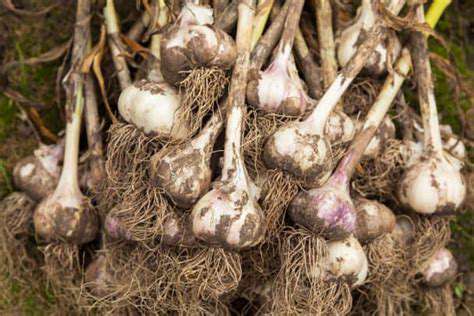How to Store Garlic: Best Practices
Jul 20, 2025 / btwgardenmachine/
Beyond basic storage techniques, there are creative methods you can implement to further extend the lifespan of your garlic. Consider using a paper bag or mesh bag, as these materials allow for better air circulation than plastic bags. Storing in a cool, dry place away from direct sunlight will further extend the viability of the garlic. This will help to maintain the flavor and quality of your garlic.
Freezing garlic is also a viable option, particularly for cloves. Freezing preserves the flavor and texture of the garlic for use in recipes throughout the year. Freezing is an effective way to preserve garlic for future use.
The Best Storage Methods for Garlic
Proper Storage Environments
Garlic thrives in cool, dark, and dry environments. Storing it in a humid or overly warm space will lead to rapid spoilage and mold growth. Avoid placing garlic near strong-smelling foods like onions or peppers, as these can transfer odors and potentially impact the flavor of your garlic. A cool pantry or a dedicated, well-ventilated storage container in a basement or cellar are ideal locations for long-term storage. Maintaining consistent temperatures is key to preventing early sprouting and extending the shelf life of your garlic bulbs.
For optimal storage, choose a location with a stable temperature range of approximately 55-65°F (13-18°C). Fluctuating temperatures can significantly shorten the life of your garlic, causing it to sprout or rot prematurely. Proper ventilation is also crucial to prevent moisture buildup, a major contributor to mold and rot. Consider using breathable containers or storing garlic in a mesh bag to allow for airflow, further enhancing its longevity.
Choosing the Right Storage Containers
The type of container you use for storing garlic can significantly influence its freshness and longevity. Glass jars with tight-fitting lids are a great option, providing excellent protection from moisture and pests. Airtight containers, while practical, can sometimes trap excess moisture, potentially leading to mold. Choose containers that allow for proper airflow, preventing the buildup of moisture and promoting a dry environment conducive to garlic's preservation.
Paper bags or mesh bags are also suitable choices, offering a breathable environment for your garlic. These allow for better airflow compared to airtight containers, which is crucial for preventing moisture damage. Ensure that the chosen container is large enough to accommodate the garlic without overcrowding. Overcrowding can lead to bruising and accelerate spoilage. Properly sized containers also promote even airflow around each bulb, preventing uneven drying and maintaining a consistent environment for optimal storage.
Preparing Garlic for Long-Term Storage
Before storing garlic for extended periods, properly curing the bulbs is essential. After harvesting, allow the garlic to dry completely in a well-ventilated area for several days, ideally in a shady spot. This drying process helps to reduce moisture content and prevents rot. Removing any damaged or bruised bulbs before storage is vital to maintain the overall quality of the remaining garlic. Remove any excess dirt or debris, and gently brush the bulbs clean before placing them in storage.
Once the garlic is completely dry, carefully select the cloves you want to use in the short term and separate them from the bulbs. Storing the separated cloves in a separate container can be more convenient. The remaining bulbs can then be stored for longer-term use. Properly preparing your garlic before storage is a critical step that significantly impacts its shelf life and quality. These steps ensure that your garlic stays fresh and flavorful for many months to come.
